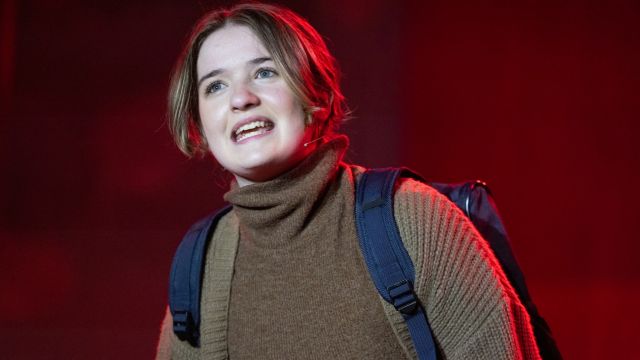Carrie The Musical
A PRODUCTION like this raises two points that are very often overlooked. That community theatre would not exist without the huge voluntary effort and dedication of so many people, and that there is prodigious talent in our community, particularly given the three strong central performances in this production.
However, at the outset, with NQOMT’s long history of performance excellence in Townsville musical theatre, I really do question the wisdom of this choice. It is not a good show and has never been a success - in fact it is a legendary Broadway flop lasting only 21 performances, ultimately begging the questions – was it then a suitable choice for the company or for community musical theatre?
It is based on what is regarded as one of the greatest horror films ever made, and the original 1976 movie was in turn based on Stephen King’s first published novel.
It is the story of Carrie - a shy young girl dominated by a fanatically religious mother, teased and bullied unmercifully by her peers, but who has mysterious telekinetic powers which she ultimately uses to wreak bloody havoc on her tormentors. Sissy Spacek won a Best Actress Oscar nomination for playing the title role, as did Piper Laurie for her supporting role as the mother.
It still remains a total anathema to me that writers Dean Pitchford and Michael Gore (Oscar and Golden Globe winners for their work on the hit 1980 film Fame) should even consider this material when creating a musical. There would be those who would not agree, but therein lies the issue.
While the original book and film were hugely successful, the musical that the writers produced was hardly top drawer. The score is at best so-so, and because it has been adapted into what is essentially an unsuitable genre the script seems to trivialise the drama, horror and gravity of the situation.
Perhaps it was felt that director Liam Boyd could do something with it, but was this possibly a bridge too far? A show like this would never be easy to approach without a strong vision and intention, and it clearly demanded all the knowledge, experience and ability of the director to breathe fresh life into it.
It called for strong characterisation from every member of the cast, particularly the ensemble, and the ongoing challenge is to produce three-dimensional characters from a challenging one-dimensional script. The characters’ motivations needed to be minutely examined, and the action needed to be paced and carefully choreographed so that by the time the climax came, tension (rather than expectation) had been built up even though most of the audience would probably be familiar with the ending,
In the title role, Mads Lindgren displayed an outstanding singing voice as Carrie White. Indeed, she established a solid stage presence from her first entrance and with her first notes, the entire production effectively lifted. This power was evident throughout the performance, particularly in duets with her mother and school coach (Tina Seiferling as Ms Gardner)
I look forward to seeing much more of Hannah Smith who was convincing as Carrie’s dominating mother, Margaret. Her powerful singing voice had an unusual and pleasant tone, and it would be interesting to see her tackle a more sympathetic role.
Jakaya Drysdale, who impressed so strongly in the production of Chess (2023) and last year’s Alice By Heart, continues to build up her strength as an actor and singer with each successive production. Her strength is an ability to connect with raw emotion, and as she gains experience under the right direction, this innate ability will be honed and used to great advantage.
Other performances of note included Sarah Valinoti as Chris, the chief school bully and manipulator, a role she clearly relished as the epitome of the “mean girl”, and Sam Taylor was suitably empathetic as Tommy, the school athlete.
It is important to add that while I had issues with the material and direction, the entire production was undercut by what I can only describe as appalling sound. The balance was clearly off and there were numerous late cues with microphones turned on too late, but - most importantly - there was far too much treble in the mix which not only exaggerated a sibilance in the performers and produced a shrieking effect when actors hit their high notes. The professional company operating the sound should have known better.
In short, given better direction, production values and ultimately a better script, it was a bravely attempted choice.
Review by Trevor Keeling
Image: Sapphire Soul Photography.
Subscribe to our E-Newsletter, buy our latest print edition or find a Performing Arts book at Book Nook.

